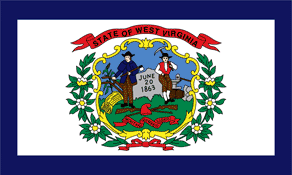West Virginia State Standards for Language Arts: Grade 4

Currently Perma-Bound only has suggested titles for grades K-8 in the Science and Social Studies areas. We are working on expanding this.
WV.RLA.S.4.1. Reading: Students will apply reading skills and strategies to inform, to perform a task and to read for literacy experience by identifying and using grade appropriate essential reading components (phonemic awareness, phonics, vocabulary, fluency, comprehension, written application) and selecting a wide variety of literature and diverse media to develop independence as readers.
RLA.O.4.1.1. Identify and practice appropriate vocabulary:
RLA.O.4.1.1.a. Multiple meaning words
RLA.O.4.1.1.b. Synonyms
RLA.O.4.1.1.c. Antonyms
RLA.O.4.1.1.d. Homonyms
RLA.O.4.1.1.e. Content area vocabulary
RLA.O.4.1.1.f. Context clues
RLA.O.4.1.2. Apply structural analysis including etymology and context clues to decode and encode words.
RLA.O.4.1.3. Use pre-reading strategies to comprehend text (e.g., activating prior knowledge, predictions, questioning).
RLA.O.4.1.4. Apply and generate tiered levels of vocabulary in speaking and reading experiences.
RLA.O.4.1.5. Read fluently with appropriate rate, accuracy and prosody.
RLA.O.4.1.6. Examine meaning clues to aid comprehension of content across the curriculum (e.g., pictures, picture captions, titles, headings, text structure, topic).
RLA.O.4.1.7. Read fourth grade instructional level texts and use self-correction strategies (e.g., decoding, searching for cues, rereading).
RLA.O.4.1.8. Interpret and extend the ideas in literary and informational texts to summarize, determine story elements, skim and scan, determine cause and effect, compare and contrast, visualize, paraphrase, infer, sequence, determine fact and opinion, draw conclusions, analyze characterize and provide main idea and support details.
RLA.O.4.1.9. Determine the author's purpose in literary and informational texts and use supporting material to justify author's intent:
RLA.O.4.1.9.a. To persuade
RLA.O.4.1.9.b. To entertain
RLA.O.4.1.9.c. To inform
RLA.O.4.1.9.d. To determine a specific viewpoint
RLA.O.4.1.10. Compare and contrast self to text in making connections to characters or simple events in a literary work to own life and other cultures (e.g. events, characters, conflicts, themes).
RLA.O.4.1.11. Distinguish between the ways in which language is used in literary texts:
RLA.O.4.1.11.a. Simile
RLA.O.4.1.11.b. Metaphor
RLA.O.4.1.11.c. Idioms
RLA.O.4.1.11.d. Analogies
RLA.O.4.1.11.e. Puns
RLA.O.4.1.12. Recognize and explain the defining characteristics of genre in literary and informational texts:
RLA.O.4.1.12.a. Fairy tales
RLA.O.4.1.12.b. Folk tales
RLA.O.4.1.12.c. Myths
RLA.O.4.1.12.d. Poems
RLA.O.4.1.12.e. Fables
RLA.O.4.1.12.f. Fantasies
RLA.O.4.1.12.g. Biographies
RLA.O.4.1.12.h. Short stories
RLA.O.4.1.12.i. Novels
RLA.O.4.1.12.j. Plays
RLA.O.4.1.12.k. Legends
RLA.O.4.1.12.l. Autobiographies
RLA.O.4.1.12.m. Magazines
RLA.O.4.1.12.n. Newspapers
RLA.O.4.1.12.o. Textbooks
RLA.O.4.1.12.p. Essays
RLA.O.4.1.12.q. Speeches
RLA.O.4.1.12.r. Electronic databases
RLA.O.4.1.12.s. Reference materials
RLA.O.4.1.13. Judge the reliability or logic of informational texts.
RLA.O.4.1.14. Select and use a variety of sources to gather information (e.g., dictionaries, encyclopedias, newspapers, informational texts, electronic resources).
RLA.O.4.1.15. Use graphic organizers and visualization techniques to interpret information (e.g., charts, graphs, diagrams, non-verbal symbols).
RLA.O.4.1.16. Use reading skills and strategies to understand a variety of information resources to support literacy learning (e.g., written directions, captions, electronic resources, labels, information texts).
RLA.O.4.1.17. Increase the amount of independent reading to build background knowledge, expand vocabulary and comprehend literary and informational text.
WV.RLA.S.4.2. Writing: Students will apply writing skills and strategies to communicate effectively for different purposes by using the writing process applying grammatical and mechanical properties in writing and selecting and evaluating information for research purposes.
RLA.O.4.2.1. Demonstrate proper manuscript and cursive writing techniques:
RLA.O.4.2.1.a. Legibility
RLA.O.4.2.1.b. Uniformity in all written work
RLA.O.4.2.2. Develop and apply the proper structure for simple and compound sentences.
RLA.O.4.2.3. Identify and produce a sentence with proper word choice to include:
RLA.O.4.2.3.a. Verb tense
RLA.O.4.2.3.b. Verb usage
RLA.O.4.2.3.c. Subject/verb agreement
RLA.O.4.2.3.d. Pronoun usage
RLA.O.4.2.3.e. Adjectives and adverbs
RLA.O.4.2.4. Compose a written composition from a prompt using the writing process in a timed and un-timed setting.
RLA.O.4.2.5. Develop proper form in written composition:
RLA.O.4.2.5.a. Beginning-middle-end
RLA.O.4.2.5.b. Indentation
RLA.O.4.2.5.c. Topic sentence
RLA.O.4.2.5.d. Introductory and concluding paragraphs
RLA.O.4.2.5.e. Related details
RLA.O.4.2.5.f. Related and cohesive paragraphs
RLA.O.4.2.5.g. Transitional and descriptive words
RLA.O.4.2.6. Write to persuade using order of importance, classifying differences and similarities, classifying advantages and disadvantages.
RLA.O.4.2.7. Develop a composition that demonstrates an awareness of the intended audience using appropriate language, content and form.
RLA.O.4.2.8. Create an effective response to a task in form, content and language (e.g., letters, poems, brief reports or descriptions, instructions, journals).
RLA.O.4.2.9. Use editing strategies to correct errors in sentence structure (fragments and run-on sentences), capitalization, punctuation and grammar.
RLA.O.4.2.10. Identify and apply conventions of spelling in written composition (e.g., spell commonly misspelled words from appropriate grade level lists, use syllable constructions to spell words, use vowel combinations for correct spelling, use affixes).
RLA.O.4.2.11. Use reference skills to identify words.
RLA.O.4.2.12. Use strategies to gather and record information for research topics:
RLA.O.4.2.12.a. Note taking
RLA.O.4.2.12.b. Summarizing
RLA.O.4.2.12.c. Paraphrasing
RLA.O.4.2.12.d. Describing in narrative form
RLA.O.4.2.12.e. Gathering information from direct quotes, maps, charts, graphs and tables
RLA.O.4.2.13. Select and use a variety of sources to gather information (e.g., dictionaries, encyclopedias, newspapers, informational texts, electronic resources).
RLA.O.4.2.14. Use strategies to compile information into written reports or summaries (e.g., incorporate notes into a finished product, include simple facts-details-explanations-examples, draw conclusions from relationships and patterns that emerge from data of different sources, use appropriate visual aids and media).
RLA.O.4.2.15. Critically evaluate own and others' written compositions.
WV.RLA.S.4.3. Listening, Speaking and Media Literacy: Students will apply listening, speaking and media literacy skills and strategies to communicate with a variety of audiences and for different purposes.
RLA.O.4.3.1. Listen and respond to different literary forms and speakers (e.g., summarize and paraphrase to confirm understanding, recount personal experiences, listen to information and exhibit comprehension, provide reasons in support of opinions, respond to others' ideas).
RLA.O.4.3.2. Distinguish a variety of messages conveyed through visual media (e.g., internet, database, email, electronic resources, online research).
RLA.O.4.3.3. Recognize communication skills (e.g., speaking rate, audience, etiquette, active listening).
RLA.O.4.3.4. Create an age appropriate media literacy product that reflects understanding of format, characteristics and purpose.